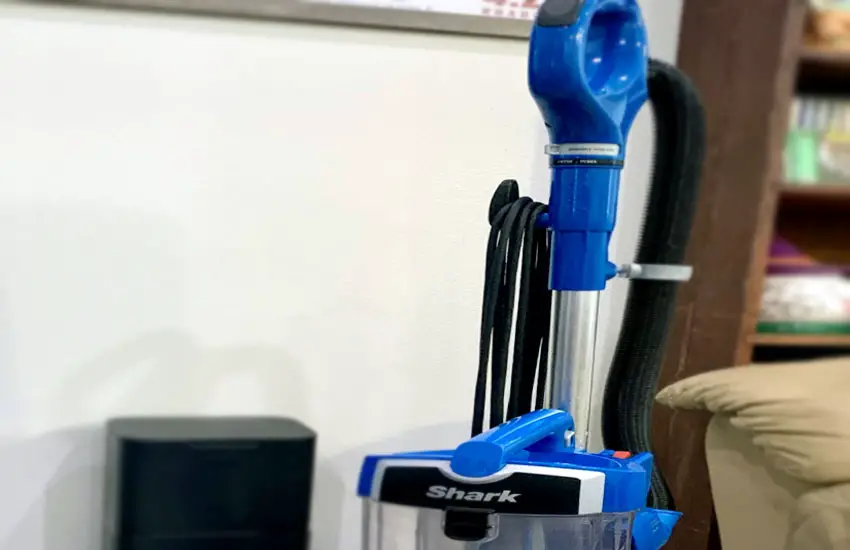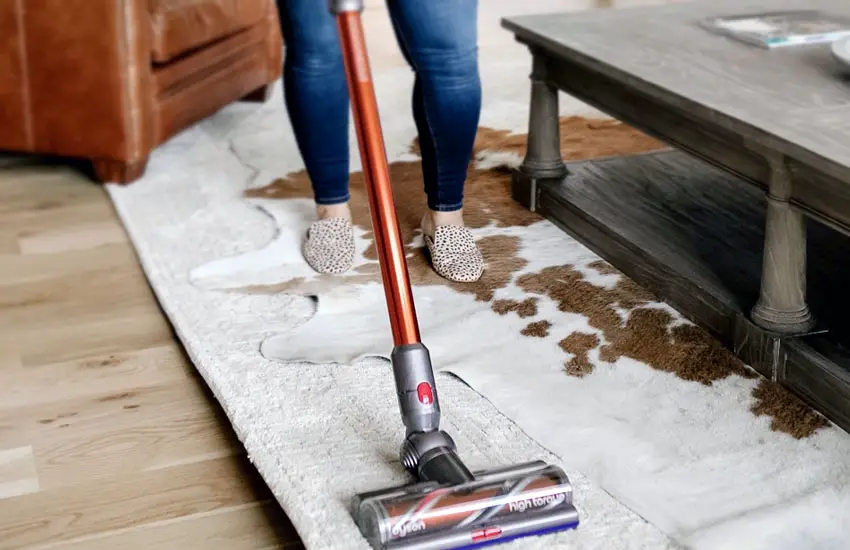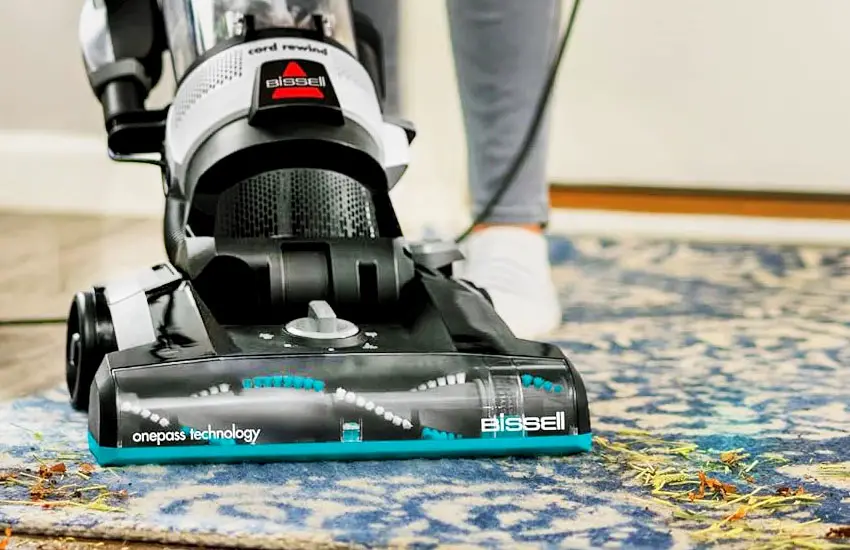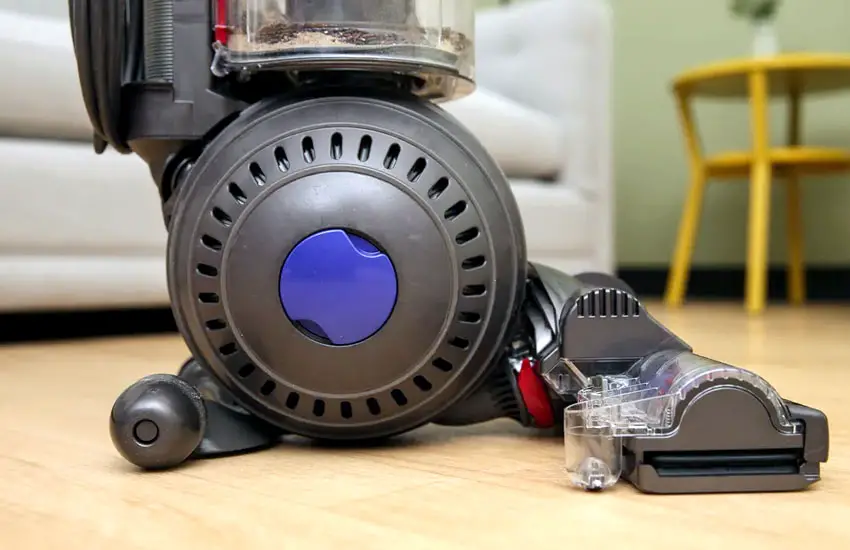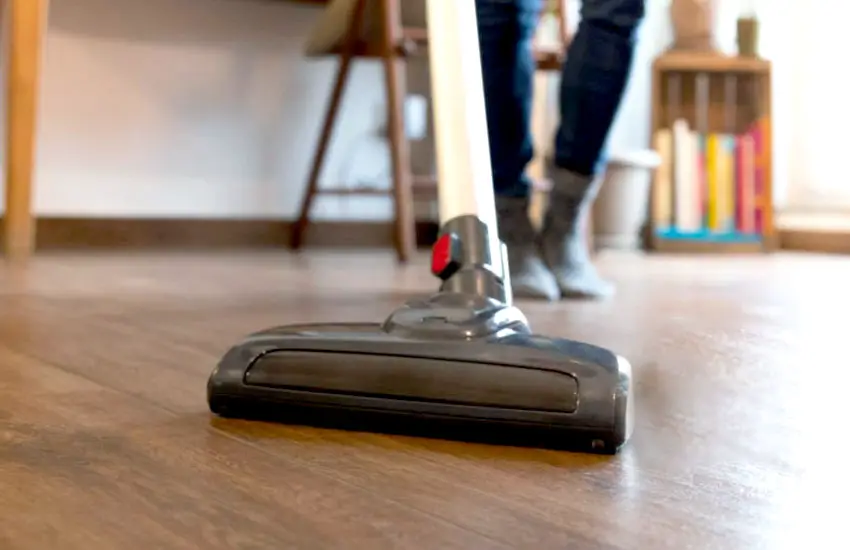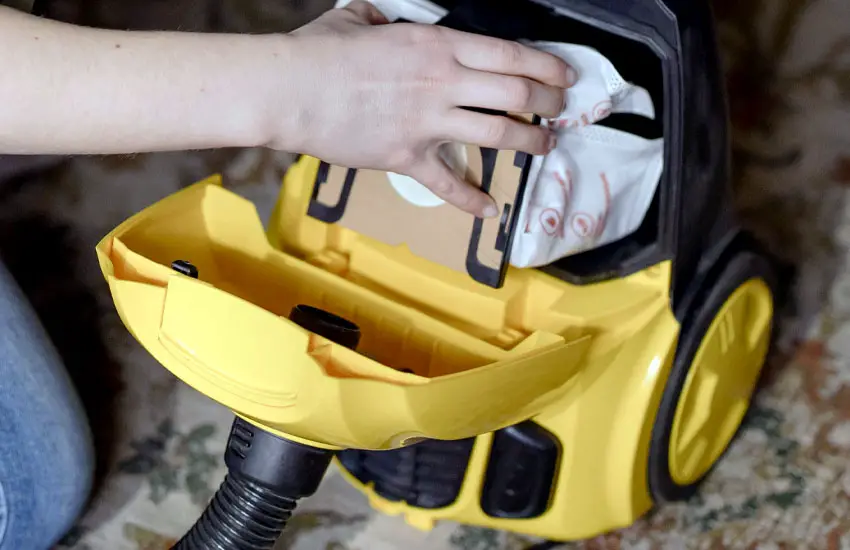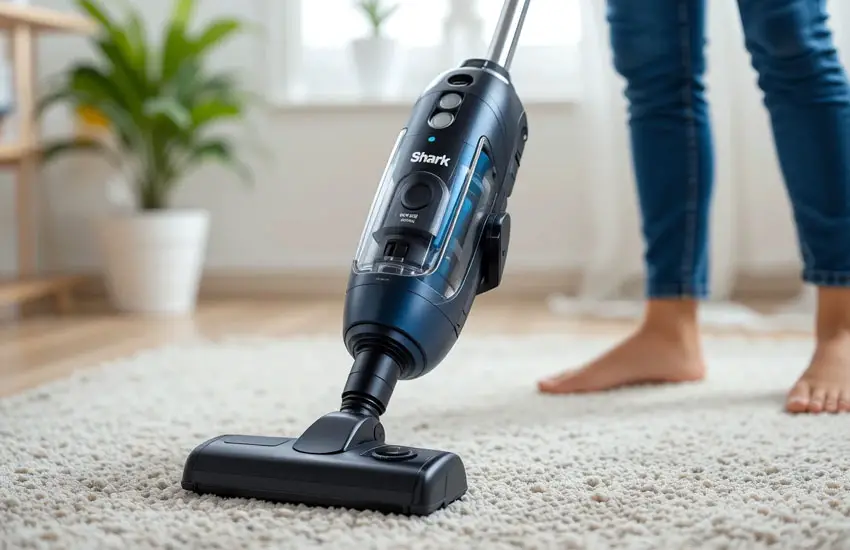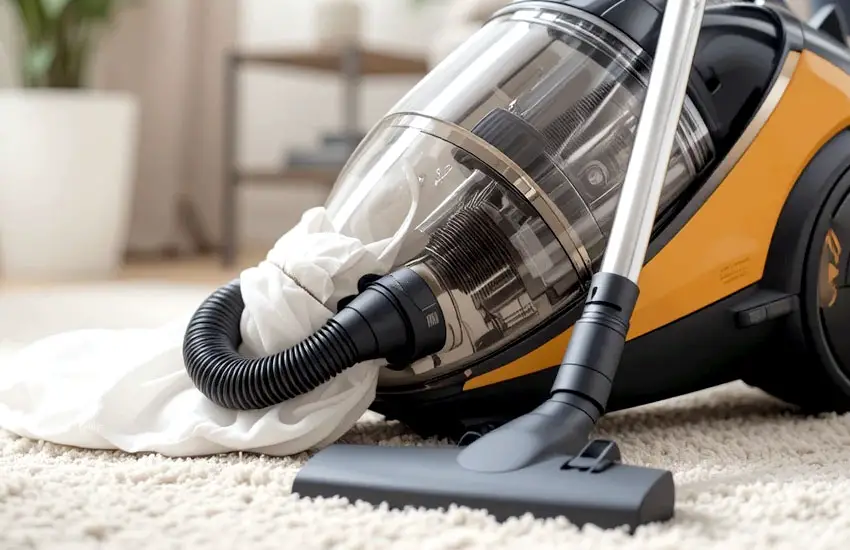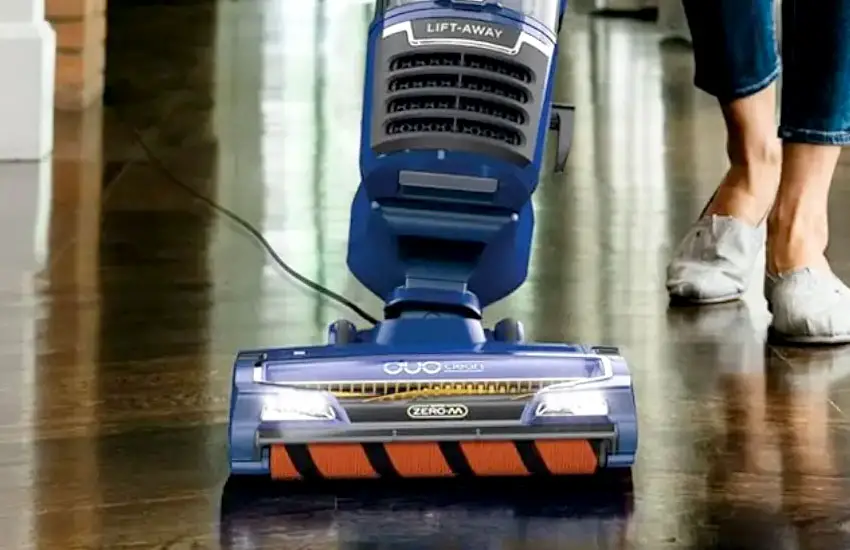As an Amazon Associate, I earn from qualifying purchases at no extra cost to you.
Shark Vacuum Stopped Suction? Here’s What You Can Do!
Vacuum cleaners are the unsung heroes of our homes—sucking up dirt, crumbs, and pet hair without a second thought. But what happens when they stop doing what they do best? If you’ve found yourself struggling with a Shark vacuum that’s lost its suction, don’t worry—you’re not alone! In this blog post, we’ll walk you through why your Shark vacuum might have stopped suctioning, how to fix it, and most importantly, how to keep it working like new for years to come. Let’s dive into this cleaning mystery together!
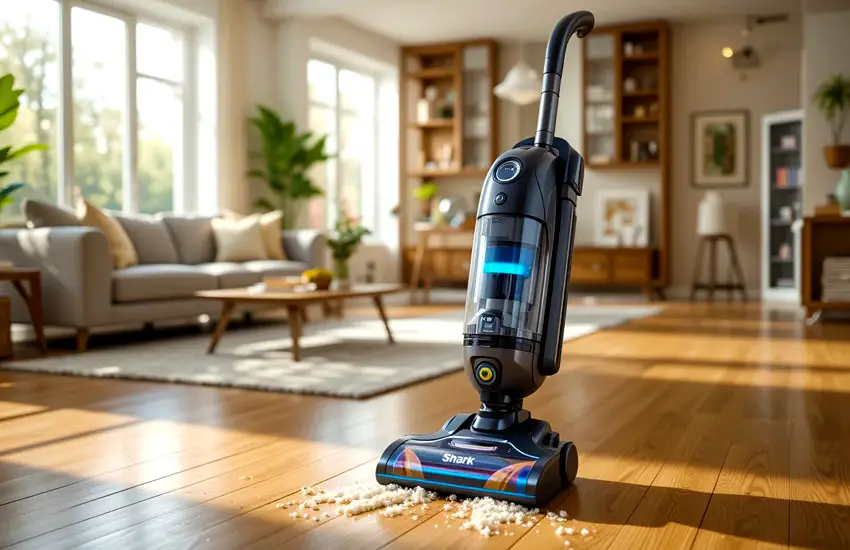
Common Reasons Why Your Shark Vacuum Stopped Suctioning
A Shark vacuum is typically a trusty companion in your cleaning routine. However, when it suddenly loses suction, it can feel like a giant headache. There are several potential causes, ranging from simple problems that you can easily fix to more complex issues that may require professional assistance. To make it easier for you, we’ll break down the most common reasons behind the loss of suction and show you how to identify them.
1. Clogged Hose or Hose Connection
The first place you’ll want to check when your Shark vacuum loses suction is the hose. Over time, debris such as dirt, hair, and dust can build up inside the hose, causing a clog. If the hose is blocked, air can’t flow freely, and the suction power diminishes.
How to fix it:
To check for a clog, disconnect the hose from both the vacuum and the cleaning head. Shine a flashlight inside and inspect for any visible blockages. If you see something, use a broomstick or similar long object to push the debris out. If the clog is deeper, you can try running warm water through the hose, but make sure to dry it thoroughly before reattaching it to the vacuum.
2. Dirty or Clogged Filters
Another frequent cause of poor suction is clogged filters. Shark vacuums often have one or two filters (depending on the model), and they can easily become clogged with dirt, dust, and debris over time. When filters become dirty, air can’t flow properly, which means the vacuum struggles to maintain suction.
How to fix it:
Start by locating the filters in your Shark vacuum. Most models have one located near the dust canister and another in the motor area. Take them out and inspect them for dirt and debris. Use cold water to rinse the filters and let them air dry for 24 hours before placing them back into the vacuum. It’s important not to use soap or detergents, as this can damage the filter.
3. Blocked or Jammed Brush Roll
The brush roll is the spinning mechanism that agitates the carpet fibers and helps lift dirt. Over time, hair, string, or even debris can get tangled around the brush roll, causing it to stop spinning. This means your Shark vacuum isn’t able to effectively lift dirt, which will make suction seem weak or non-existent.
How to fix it:
Turn off the vacuum and flip it over. Remove any debris or hair wrapped around the brush roll. You might need a pair of scissors to carefully cut away tangled strands of hair or string. Once the brush roll is clear, give it a quick spin by hand to ensure it moves freely.
4. Full Dust Bin or Bag
If your Shark vacuum has a bag or dust canister, it’s essential to empty it regularly. A full dustbin or bag can drastically reduce the vacuum’s suction power because there’s nowhere for the dirt to go. Once the canister or bag is full, airflow is restricted, and the vacuum can no longer function at its best.
How to fix it:
Empty the dustbin or replace the vacuum bag if it’s full. Make sure to clean the inside of the dustbin with a damp cloth to remove any lingering dust or debris. For bagless models, it’s also a good idea to give the bin a quick rinse to ensure there’s no leftover grime.
5. Motor or Internal Components Issue
If none of the above problems seem to be the issue, the problem could be with the motor or internal components of your Shark vacuum. Over time, the motor can wear out, or other parts inside the vacuum can break down, causing suction to decrease significantly.
How to fix it:
This is one of the more complicated problems to address and may require professional repair. If you suspect an issue with the motor or internal components, contact Shark customer support or take your vacuum to an authorized repair center. Before doing so, however, it’s always worth checking if your vacuum is still under warranty.
6. Air Leaks
Air leaks are another hidden culprit behind loss of suction. If any part of your Shark vacuum, including the hose, filter housing, or dustbin, has a cracked seal, it can cause air to escape, which reduces the suction power. This is often a subtle issue that requires a keen eye to identify.
How to fix it:
Inspect all the seals on your vacuum, especially the area around the dustbin and filter. If you find any cracks or breaks, try replacing the damaged parts. Some Shark models offer replacement seals that you can easily install yourself.
Step-by-Step Guide to Fixing Low Suction on Your Shark Vacuum
1. Check and Clean the Filters
The first step in fixing your Shark vacuum is to clean the filters. Filters are like the lungs of your vacuum, and when they get clogged with dirt, dust, or hair, they prevent the vacuum from suctioning properly. Cleaning the filters is quick, easy, and can restore the suction power of your vacuum.
Start by turning off your vacuum and unplugging it from the electrical outlet. This is an important safety step, as you don’t want it running while you’re working on it. Once the vacuum is unplugged, locate the filters. Depending on your Shark vacuum model, you’ll likely find the filters near the dustbin or the motor area. They may be hidden behind a cover or removable compartment, so take a close look and open it up.
Once you’ve located the filters, carefully remove them from the vacuum. Be gentle to avoid damaging the filter or the vacuum. Now, take the filters to the sink. Hold them under cold running water, and gently shake or tap them to remove any dust or dirt stuck in the fibers. If the filter is very dirty, you can use a soft brush or cloth to scrub it lightly. Be careful not to use any harsh cleaning products, as soap or detergents can damage the filter.
After washing the filter, leave it out to air dry completely. Do not put it back into the vacuum until it is fully dry, as a damp filter can cause issues with airflow. Depending on your model, drying the filter may take a full day or so, so it’s important to be patient and let it dry completely before reinserting it into the vacuum.
When the filter is dry, carefully place it back into the vacuum. Make sure it fits snugly and is securely in place. Now you’re ready to test the suction power of your vacuum. If the filter was the problem, you should notice an immediate improvement in suction after cleaning it.
2. Inspect the Hose for Blockages
Another reason your Shark vacuum might have lost suction is a clogged hose. The hose is a major pathway for air and dirt to travel through the vacuum, so if it gets blocked, the suction will suffer. Thankfully, clearing a clogged hose is an easy and straightforward process.
First, turn off the vacuum and unplug it from the power outlet to ensure safety. After that, locate where the hose attaches to the vacuum’s main body and the cleaning head. You can usually detach the hose at both ends by simply pulling on it or twisting it off. Once the hose is removed, inspect it closely for any visible blockages or debris. Sometimes, you can see a clog if the hose is filled with dust, hair, or dirt.
If you notice a blockage, you can try to push it out using a broomstick or similar long object. Gently insert the stick into the hose and push the debris through to the other end. If the debris is stuck and hard to move, try tapping the hose lightly on the ground to loosen it up. If you don’t see any debris but still suspect a blockage, you can try running warm water through the hose to loosen anything inside. Afterward, let the hose air dry completely before reattaching it.
Sometimes, small blockages can be hard to see, so after checking with the broomstick, you can hold the hose up to the light to see if you can spot anything further down. If the hose is clear and free of debris, go ahead and reattach it to the vacuum.
Once the hose is reattached, test the vacuum to see if the suction has improved. If the suction is better, you’ve successfully cleared the blockage. If the suction is still weak, you may need to inspect other parts of the vacuum.
3. Clean the Brush Roll
The brush roll, or the spinning bristles at the bottom of your vacuum, plays an important role in lifting dirt and debris from your carpets or floors. If the brush roll is clogged with hair, string, or other debris, it can get stuck and stop spinning properly, which leads to weak suction. Luckily, cleaning the brush roll is a simple task.
Start by turning off the vacuum and unplugging it from the outlet. Flip the vacuum over so that the brush roll is facing up, and take a close look. You’ll probably see hair, strings, or other debris wrapped around the brush. Use a pair of scissors or your hands to carefully cut or pull away any tangled material. Be sure to cut any hair or string very carefully so that you don’t damage the brush or vacuum.
Once you’ve removed the debris, try spinning the brush roll by hand. It should rotate smoothly and without resistance. If the brush roll feels stiff or stuck, try removing any additional blockages that may be in the way. Sometimes, debris can get lodged in the brush roll housing, so you may need to clean that area out with a small tool or cloth.
Once the brush roll is free of hair and debris, give it a quick spin again to make sure it moves smoothly. If everything seems to be in good working order, flip the vacuum back over and try using it again. If your vacuum’s suction was being affected by a jammed brush roll, cleaning it should restore full suction power.
If you notice that the brush roll looks worn or damaged, it may be time to replace it. Check with Shark’s customer service or your vacuum’s manual for guidance on how to purchase and replace the brush roll.
4. Empty the Dustbin or Replace the Bag
One of the most common reasons a vacuum loses suction is that its dustbin or vacuum bag is full. When the dustbin is packed with dirt and debris, air can’t flow properly through the vacuum, and the suction will be weak. Keeping your dustbin or bag clean is one of the easiest ways to maintain strong suction.
Start by turning off the vacuum and unplugging it. If your vacuum has a dustbin, simply detach it from the main vacuum body. You can do this by pressing the button or latch that holds the dustbin in place. Once the dustbin is removed, empty it into the trash. Make sure to empty it completely, as any remaining dirt will restrict airflow.
After emptying the dustbin, it’s a good idea to give it a quick cleaning. Use a damp cloth to wipe the inside of the dustbin to remove any lingering dirt or dust. Be sure to dry it completely before reinserting it into the vacuum. This step ensures that there’s no extra dust inside, which can interfere with suction.
If your Shark vacuum uses a bag instead of a dustbin, replace the bag when it’s full. A full vacuum bag will reduce suction, so don’t wait too long to change it. When replacing the bag, make sure the new bag fits securely in place.
Once the dustbin is empty or the new bag is in place, reattach it to your vacuum and test the suction. If the dustbin or bag was the cause of low suction, you should notice a big improvement right away.
5. Check for Air Leaks
Air leaks in your vacuum can also reduce suction, and they can be a bit trickier to spot. The most common places where air leaks can occur are around the dustbin, hose, and filter areas. If you’ve already checked and cleaned the filters, hose, and brush roll but still experience weak suction, air leaks might be the issue.
To check for air leaks, start by inspecting the seals around the dustbin, the filter compartment, and the hose connections. Look for any cracks or gaps in the seals that could allow air to escape. If you notice a cracked seal, you can often replace it with a new one, which can be purchased from Shark or a vacuum repair store.
If you can’t find any visible leaks but still suspect a problem, you can try placing your vacuum in a sealed room and running it while holding a piece of tissue or paper near the seals. If the paper gets sucked toward the vacuum, you’ve likely found an air leak.
If you do find an air leak, replacing the seal or part with a new one should restore suction. If you’re not sure how to replace the seals, refer to your vacuum’s manual or consult with Shark customer service for further instructions.
6. Test the Suction Power
Once you’ve gone through all of the above steps, it’s time to test your vacuum. Plug it in, turn it on, and run it over a carpet or hard floor to see how well it picks up dirt and debris. If the suction power has improved, then you’ve successfully fixed the issue!
If, after trying all of these steps, the vacuum is still losing suction, you might need professional help. It could be an internal motor issue, or another component might need to be replaced. Don’t hesitate to contact Shark customer service for assistance if you’re unable to resolve the issue on your own.
By following these simple steps, you can get your Shark vacuum back to working like new! Regular cleaning and maintenance will help prevent suction problems from happening in the future and extend the life of your vacuum.
Preventative Tips to Keep Your Shark Vacuum’s Suction Strong
Now that you’ve fixed your Shark vacuum, it’s important to keep it in top shape to avoid future suction issues. Regular maintenance can extend the life of your vacuum and ensure it keeps working like new for years.
1. Regularly Clean and Replace Filters
Filters can get clogged with dust and debris over time, leading to reduced suction. To avoid this:
- Clean your filters every 1–2 months, depending on how frequently you use your vacuum.
- Replace the filters when they start showing signs of wear or damage (usually every 6–12 months).
2. Empty the Dustbin or Replace the Bag Frequently
Even if your dustbin or vacuum bag doesn’t appear full, it’s a good idea to empty or replace it regularly to maintain strong suction. Aim to empty the dustbin after every use, especially if you vacuum often.
3. Keep the Brush Roll Clean
Hair, fibers, and debris tend to get wrapped around the brush roll, which can reduce suction. To keep the brush roll functioning optimally:
- Clean it after every few uses.
- If you have long hair or pets, check it more frequently.
4. Store Your Vacuum Properly
How you store your Shark vacuum can also impact its performance. Always store it in a dry, clean area, and make sure the hose is not kinked or bent in a way that could cause blockages.
5. Inspect for Wear and Tear
As your Shark vacuum ages, parts such as the hose, brush roll, and seals can wear out. Regularly inspect these parts for any signs of damage, and replace them if necessary.
I hope these steps have helped you understand why your Shark vacuum stopped suctioning and how to get it back to peak performance. By following these troubleshooting tips and performing regular maintenance, you’ll keep your vacuum running strong for years to come!
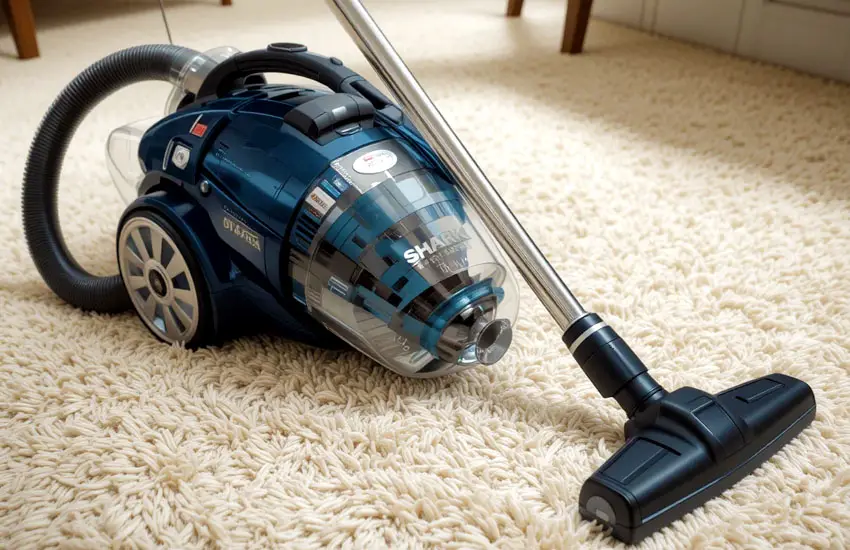
Frequently Asked Questions
Is it normal for a Shark vacuum to lose suction over time?
Yes, over time, your Shark vacuum can lose suction due to clogging, dirty filters, or worn parts. Regular maintenance can help prevent this.
Can a clogged hose cause a Shark vacuum to stop suctioning?
Yes, if the hose is clogged with debris or hair, it can restrict airflow, leading to a loss of suction.
Do I need to replace the filters in my Shark vacuum?
Yes, filters need to be cleaned regularly and replaced every 6–12 months, depending on usage, to maintain optimal suction.
Is it safe to rinse my Shark vacuum filters with water?
Yes, you can rinse the filters with cold water, but avoid using soap or detergents, and let them dry completely before reinserting them.
Can I fix my Shark vacuum myself, or do I need professional help?
Most suction problems can be fixed with simple DIY steps, but if you suspect a motor or internal component issue, professional repair may be needed.
Do I need to clean my Shark vacuum after every use?
While you don’t need to deep clean it after every use, emptying the dustbin, checking the brush roll, and cleaning the filters regularly will keep your vacuum in top shape.
Is it okay to use my Shark vacuum with a full dustbin?
No, a full dustbin or bag can reduce suction. It’s best to empty the dustbin after each use or replace the bag regularly.
Can I prevent my Shark vacuum from losing suction in the future?
Yes, by performing regular maintenance such as cleaning filters, checking for blockages, and keeping the brush roll clear, you can prevent suction loss.


